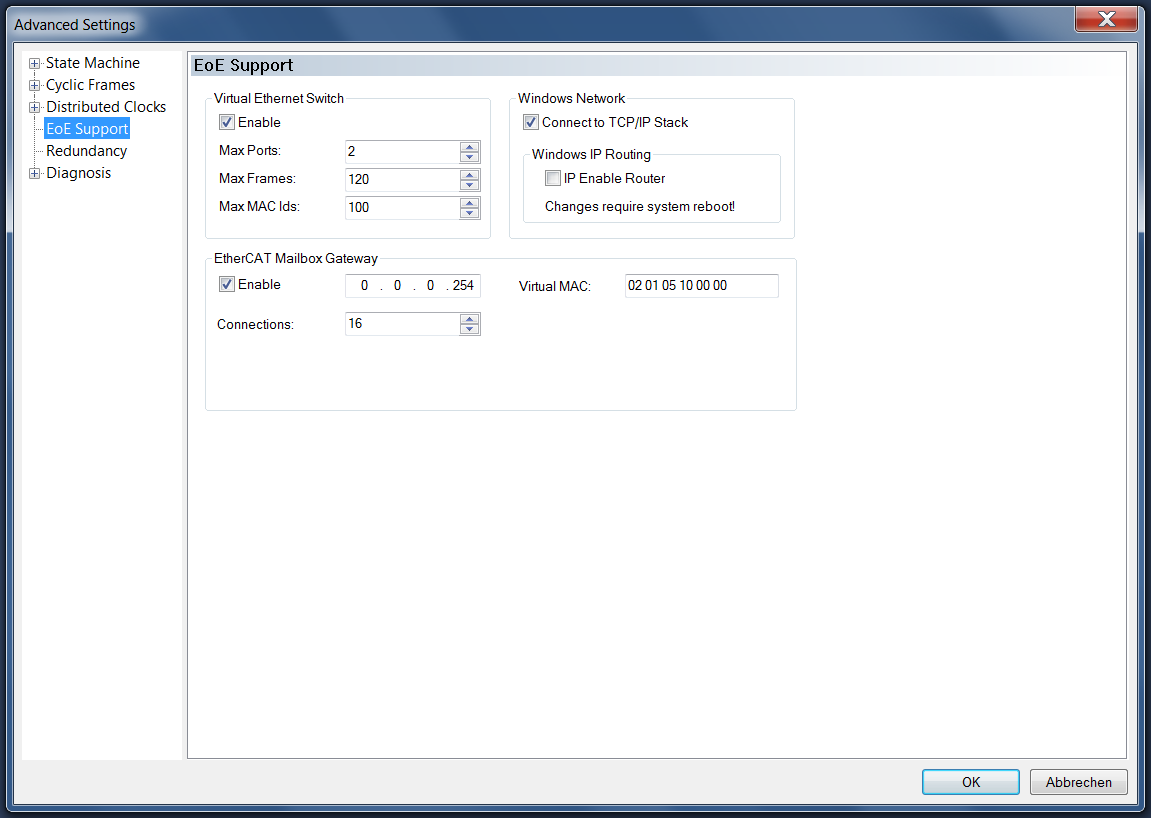EoE Support
EoE Support
Ethernet over EtherCAT (EoE) transparently tunnels standard Ethernet communication via EtherCAT. Tunneling allows the master device to optimize Ethernet communication without affecting the process data communication. EoE enables communication with network devices. EoE is typically used for devices with TCP/IP stack, such as a web server, or for infrastructure devices such as switch ports, to which peripheral devices can be connected.
Switch
An IP router can connect an external PC to the master device. The master device uses a virtual Ethernet switch to communicate with the slave devices. Logically, EoE works like an Ethernet switch. For example, the virtual Ethernet switch of the master device supplies data to an EoE switch port on the slave device side. The EoE switch port generally provides an interface to an Ethernet device or network. It inserts Ethernet frames into the EtherCAT protocol. The Ethernet frames in the EtherCAT protocol are transferred with acyclic mailbox communication.
EL6601
The EL6601 terminal can be integrated into an EtherCAT network. The EL6601 terminal branches off an Ethernet connection from the EtherCAT network. A network printer, a remote desktop or a subordinate controller can be connected to this Ethernet connection, for example.

Virtual Ethernet Switch
Enable: If the "Enable" checkbox is checked, the virtual Ethernet switch is enabled.
Max Ports: Here you can set the maximum number of ports that the virtual Ethernet switch can manage.
Max Frames: Here you can set the maximum number of frames that the virtual Ethernet switch can provide.
Max MAC Ids: Here you can set the maximum number of MAC Ids that the virtual Ethernet switch can manage.
Windows Network
Connect to TCP/IP Stack: Checking this checkbox enables communication with the Network Driver Interface Specification (NDIS).
Windows IP Routing
IP Enable Router: This checkbox must be checked if communication with the EtherCAT Terminals via EoE is to take place from computers connected to another network card. Communication can take place via the Virtual Ethernet Switch or via the EtherCAT Mailbox Gateway.
EtherCAT Mailbox Gateway
Enable: If the "Enable" checkbox is checked, communication via the EtherCAT Mailbox Gateway is enabled.
Virtual MAC: Virtual MAC address for communication via the EtherCAT Mailbox Gateway. On the left is the virtual IP address.
Connections: Number of clients that can connect via the EtherCAT Mailbox Gateway.